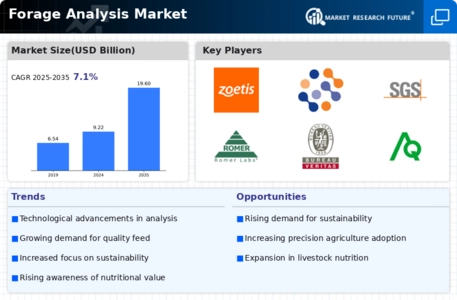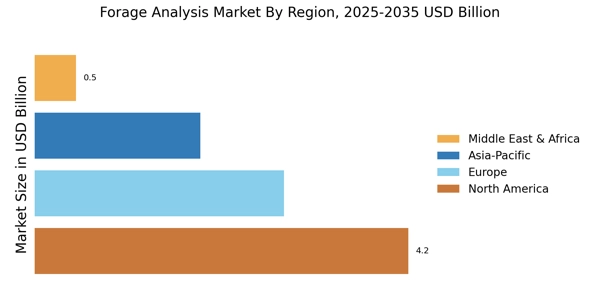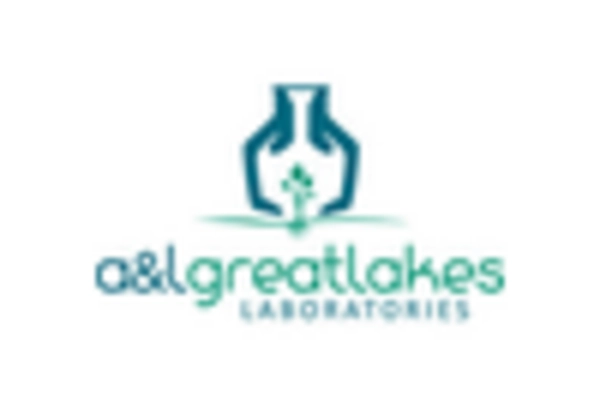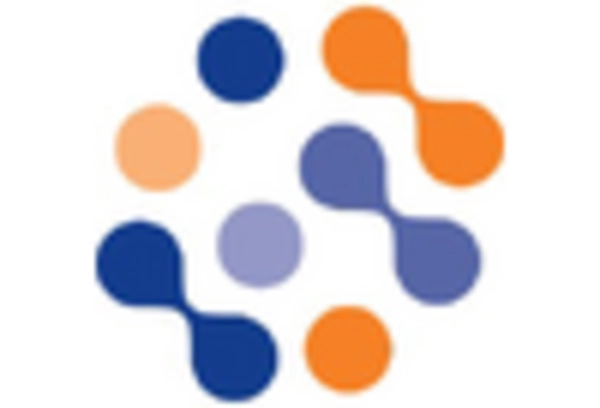Focus on Nutritional Quality
There is a growing emphasis on the nutritional quality of forage among farmers and agricultural producers. This focus is driven by the need to improve livestock health and productivity, which directly impacts profitability. The Forage Analysis Market is responding to this trend by providing advanced analytical services that evaluate the nutritional components of forage. As of 2025, the market for forage testing services is expected to expand, reflecting the increasing awareness of the importance of quality forage in livestock diets. Farmers are now more inclined to invest in forage analysis to ensure that their livestock receive balanced nutrition, which can lead to improved growth rates and reproductive performance. This shift towards prioritizing nutritional quality is likely to propel the growth of the Forage Analysis Market in the coming years.
Rising Demand for Livestock Feed
The increasing global population and the corresponding rise in meat consumption are driving the demand for high-quality livestock feed. This trend is particularly evident in regions where livestock farming is a primary economic activity. The Forage Analysis Market plays a crucial role in ensuring that livestock receive optimal nutrition through the analysis of forage quality. As of 2025, the livestock feed market is projected to reach substantial figures, indicating a robust growth trajectory. This demand necessitates advanced forage analysis techniques to assess nutrient content, digestibility, and overall quality, thereby enhancing livestock productivity and health. Consequently, the Forage Analysis Market is positioned to benefit significantly from this rising demand, as farmers increasingly rely on precise analysis to make informed feeding decisions.
Regulatory Standards and Compliance
The agricultural sector is witnessing a rise in regulatory standards aimed at ensuring food safety and quality. These regulations often require farmers to conduct thorough analyses of their forage to comply with health and safety guidelines. The Forage Analysis Market is thus experiencing increased demand for testing services that help producers meet these regulatory requirements. As of 2025, it is anticipated that compliance with these standards will become more stringent, further driving the need for reliable forage analysis. This trend not only enhances the safety of livestock products but also promotes sustainable farming practices. Consequently, the Forage Analysis Market is likely to see a surge in demand as farmers seek to adhere to these evolving regulations.
Technological Innovations in Testing
Technological advancements in analytical methods are transforming the Forage Analysis Market. Innovations such as near-infrared spectroscopy and automated laboratory systems are enhancing the speed and accuracy of forage testing. These technologies allow for real-time analysis, enabling farmers to make timely decisions regarding forage management. As of 2025, the adoption of these advanced technologies is expected to increase, driven by the need for efficiency and precision in agricultural practices. The ability to quickly assess forage quality can lead to better resource allocation and improved livestock performance. Therefore, the Forage Analysis Market stands to gain from these technological innovations, as they provide farmers with the tools necessary to optimize their forage production.
Growing Awareness of Sustainable Practices
There is an increasing awareness of sustainable agricultural practices among farmers and consumers alike. This trend is influencing the Forage Analysis Market, as producers seek to implement practices that minimize environmental impact while maximizing productivity. Sustainable forage management involves understanding the nutrient dynamics of forage crops, which can be achieved through comprehensive analysis. As of 2025, the market for sustainable forage practices is expected to grow, reflecting a shift towards environmentally friendly farming methods. Farmers are likely to invest in forage analysis to ensure that their practices align with sustainability goals, such as reducing chemical inputs and enhancing soil health. This growing emphasis on sustainability is poised to drive demand within the Forage Analysis Market.


















Leave a Comment